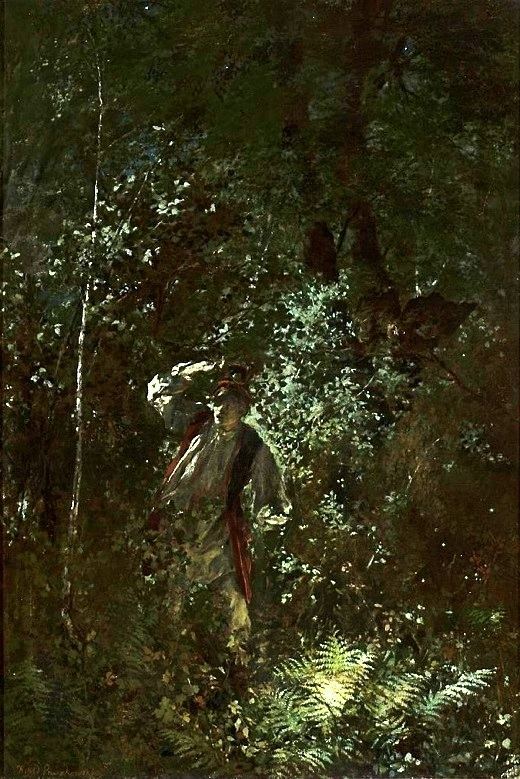 | ||
Fern flower
The fern flower is a magic flower in Slavic mythology (Belarusian: папараць-кветка, Polish: kwiat paproci, Russian: цветок папоротника, Ukrainian: цвіт-папороть), in Baltic mythology (Lithuanian: paparčio žiedas, Latvian: papardes zieds) and in Estonian mythology (Estonian: sõnajalaõis).
Contents
- Fern flower
- The ultimate fern flower
- Tradition
- Baltic and Estonian Finnish tradition
- Ukrainian Belarus and Polish tradition
- Blooming ferns
- References
The ultimate fern flower
Tradition
According to the myth, this flower blooms for a very short time on the eve of the Summer solstice (celebrated on June 21 or sometimes July 7) The flower brings fortune to the person who finds it. In various versions of the tale, the fern flower brings luck, wealth, or the ability to understand animal speech. However, the flower is closely guarded by evil spirits and anyone who finds the flower will have access to earthly riches, which have never benefited anyone, so the decision to pick the flower or leave it alone is left up to the individual.
Baltic and Estonian-Finnish tradition
In the Estonian, Lithuanian and Latvian tradition, the fern flower is supposed to appear only on the night of 23 to 24 June during the celebration of the summer solstice which is called Jāņi in Latvia, Joninės or Rasos in Lithuania, Jaaniõhtu or Jaaniöö in Estonia and juhannus in Finland. The celebration has pre-Christian origins. In addition to the idea that the finder of the fern flower will become rich or happy, here, the fern flower is sometimes perceived a symbol of fertility. During this supposedly magical night, young couples go into the woods "seeking the fern flower", which is most commonly read as a euphemism for sex. Sex can lead to pregnancy; the child could be thought of as the fern flower.
Referring to this tradition, Papardes zieds ("fern flower" in Latvian) is the name of an NGO in Latvia that promotes education about matters pertaining to sexuality, fertility, and relationships.
Ukrainian, Belarus and Polish tradition
In Ukraine, Belarus and Poland, the holiday is practiced on the eve of Ivan Kupala Day. Young girls wear wreaths in their hair and couples go into the woods searching for the fern flower. When they come out of the woods, if the male is wearing the girl's wreath, it means the couple is engaged to be married.
According to folklore, the flower is Chervona Ruta. The flower is yellow, but according to legend, it turns red on the eve of Ivan Kupala Day.
Blooming ferns
In fact, ferns are not flowering plants. However some experts think that the flowering fern myth has roots in reality. In the past, the grouping of plants was not as exact as modern taxonomic ones. Numerous flowering plants resemble ferns, or have fern-like foliage, and some of them indeed open flowers during night time. Also, certain true ferns, e.g., Osmunda regalis have sporangia in tight clusters (termed "fertile fronds"), which may appear in flower-like clusters, and as a result, they are commonly known as "flowering ferns".
